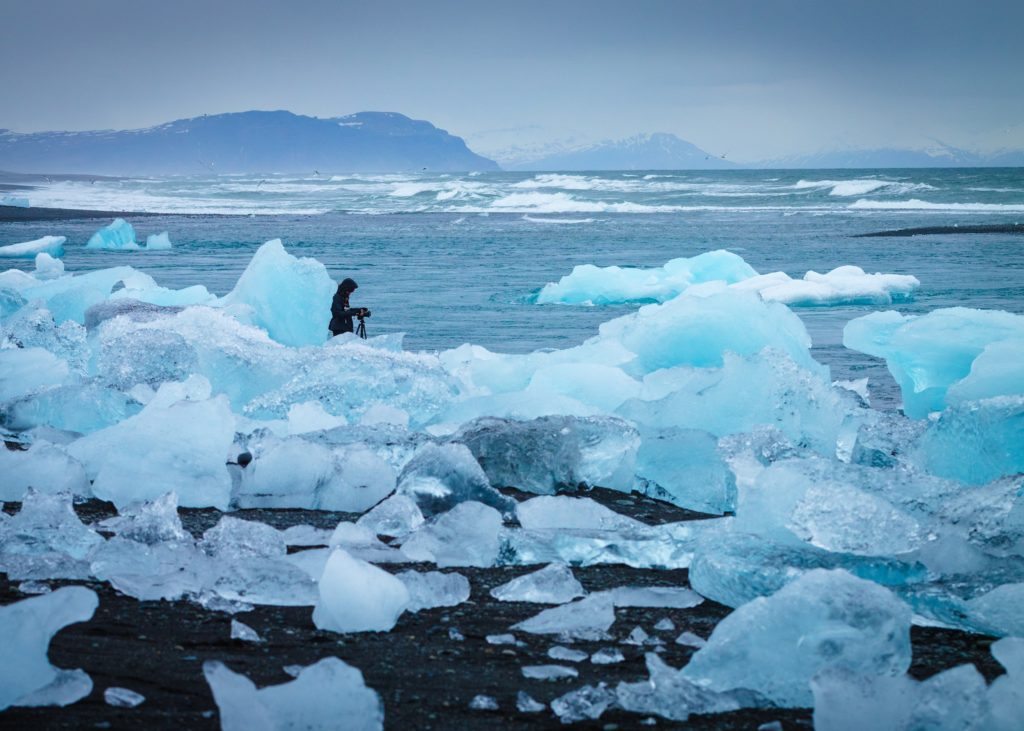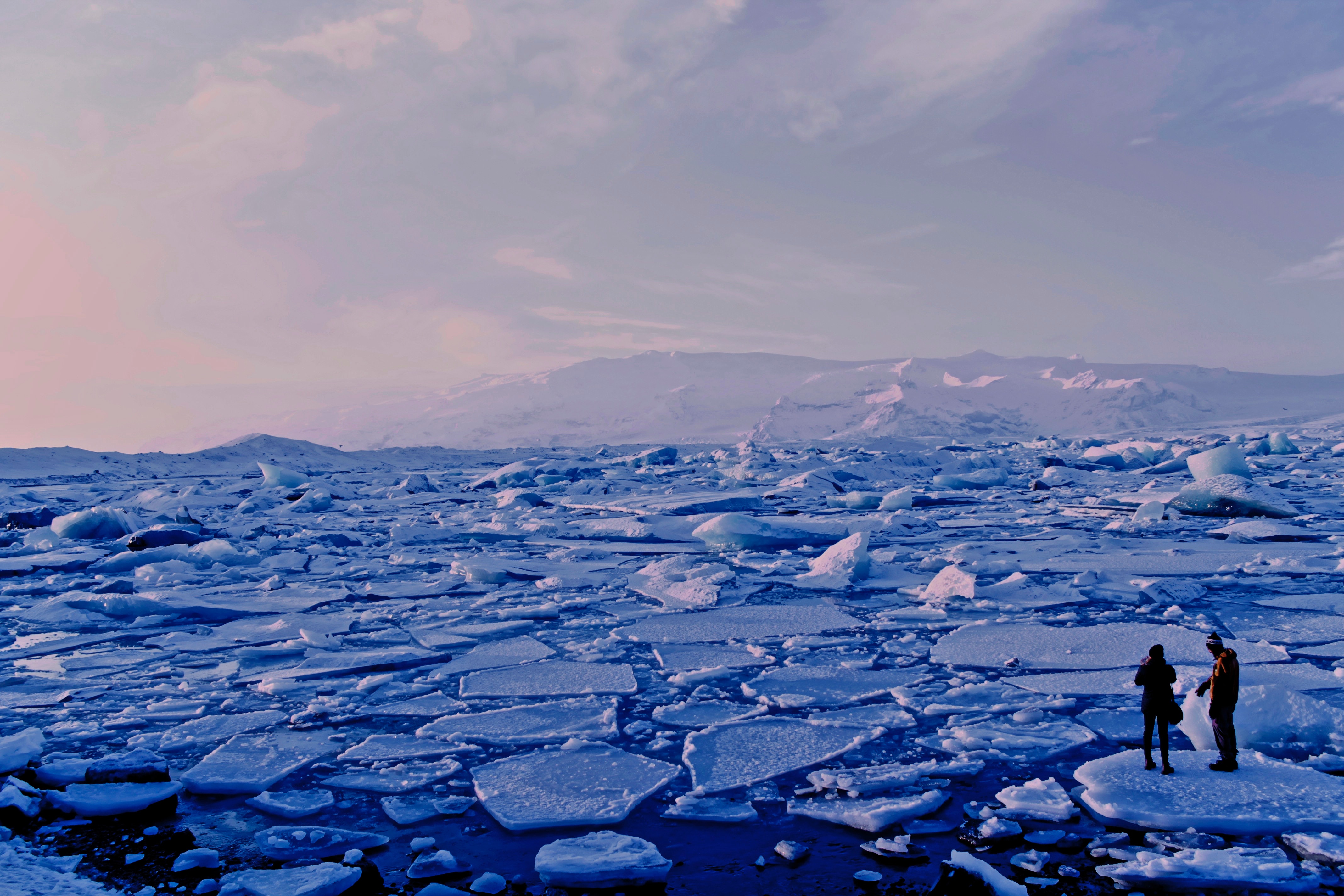
But it may be a front-row seat to the end of the world.
Last year, my oldest son, who is both single and an airline pilot and therefore can take spur-of-the-moment trips to points all over the globe, messaged me. Guess where I am, read the text beneath a photo in which he stood, hair wind-tossed, against a landscape so starkly beautiful it looked otherworldly.
OMG, I responded, is that Iceland???
Indeed it was Iceland, and for the first time in my vicarious experience of my son’s travels, I wasn’t just envious; I was flat-out jealous. I’m over using the term “bucket list,” but I’ve long wanted to visit this land of vast, unspoiled places, of puffins and whales and Northern lights, of small but doughty horses and, according to most accounts, eminently sane people.
So this year, when my son announced he had a week off in September and asked if I wanted to head over to Iceland with him, I jumped at the chance. One month from today my son and I will be landing in Reykjavik’s airport. We’ve got our itinerary all planned out. Nearly all my clothes for the trip are already tucked into my carry-on (one of the advantages of a trip to Iceland during one of the hottest months in California is that you can pack ahead). To say I’m excited would be an understatement.
Sure, one of the comments I get from friends when I talk (brag) about the trip is, “Better see it before all the ice melts.” It’s like saying to someone who is heading to Africa, “Better go while there’s still elephants.” A knee-jerk acknowledgment of the fearful knowledge we all keep at bay, the recognition of our planet’s wildly accelerating fragility.
But reading Katrin Jakobsdottir’s opinion piece in this Sunday’s New York Times brought this truth into sobering focus. Her brief essay entitled “Iceland’s Prime Minister: ‘The Ice Is Leaving’ is something of an obituary to one of her nation’s renowned ice fields, the Ok, which once covered six square miles of a mountaintop in Western Iceland. Now it’s a crater lake, with patches of snow fields on its shores.
It’s the first of Iceland’s significant glaciers to die, but it’s not likely to be the last. The prime minister, along with a group of artists and scientists including Mary Robinson, a human rights and climate activist who is the former president of Ireland, is preparing to visit Ok on August 18. There they will place a memorial shield, a “Letter to the Future.” In both Icelandic and English, it reads:
“Ok is the first Icelandic glacier to lose its status as a glacier. In the next 200 years, all our glaciers are expected to follow the same path. This monument is to acknowledge that we know what is happening and what needs to be done. Only you know if we did it.”
Ms. Jakobsdottir goes on to point out the global implications of what might look like a regrettable but localized loss. What’s happening in Iceland is happening on every continent that has glaciers, impacting populations everywhere — most directly, she notes, those in lower-lying regions, and most critically, the poorest and most vulnerable of human populations.
She articulates with clear-eyed resolve the case for climate justice, and outlines her government’s fully-funded action plan to achieve carbon neutrality by no later than 2040.
Iceland is walking its talk. But it has a population of just under 340,000, less than that of Honolulu. Without the rest of the developed world getting on board, and fast, the fate of the Ok glacier will be one of the early symptoms of a climate that isn’t just changing, but dying. At least in the form that we understand and depend on.
If enough of us and enough of our governments can demonstrate the level of rationality, responsibility, and leadership modeled by Iceland’s prime minister, we may just be able to keep at or below the threshold of 2.7 degrees Fahrenheit of warming.
But we’re on a knife’s edge of irreversible climate change. That’s what we face if we don’t keep climate warming below 3.6 degrees Fahrenheit. That’s a range of less than one full degree, but if we fail to hold the line, it means we reach an irrevocable and catastrophic tipping point. The world as we know it, the one that has allowed us to flourish to this point, will effectively end.
I’m still thrilled to be going to Iceland. But my elation and wonder at the natural splendor I expect to see will be tinged with heartache, and the desperate hope that I am not seeing a landscape that has existed in its pristine state for thousands of years but that won’t be visible to my grandchildren.
I salute you, Ms. Jakobsdottir. I hope the world takes notice of your clarion call. I hope the death of the Ok glacier will not be in vain.

Iceland is one of the places at the very top of my “must visit” list. Now I am flat out jealous of YOU! 🙂
A good friend of mine just returned from Alaska, where she honeymooned 40 years ago. She traveled out to the glacier with the very same bush pilot as on her honeymoon. The pilot told her that the glacier’s depth had decreased by over 100 feet since the time she last visited! 100 feet!!!
I hope also that we can reverse the trend of global warming so that our grandchildren will be able to visit glaciers in Iceland and Alaska too.
100 feet in 40 years?!? That is really scary. This is the real challenge of our times, and as fast as it’s happening it’s just gradual enough that we keep being distracted by whatever the most recent outrage is that’s getting media splash. Sigh.